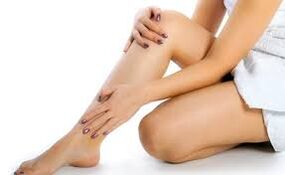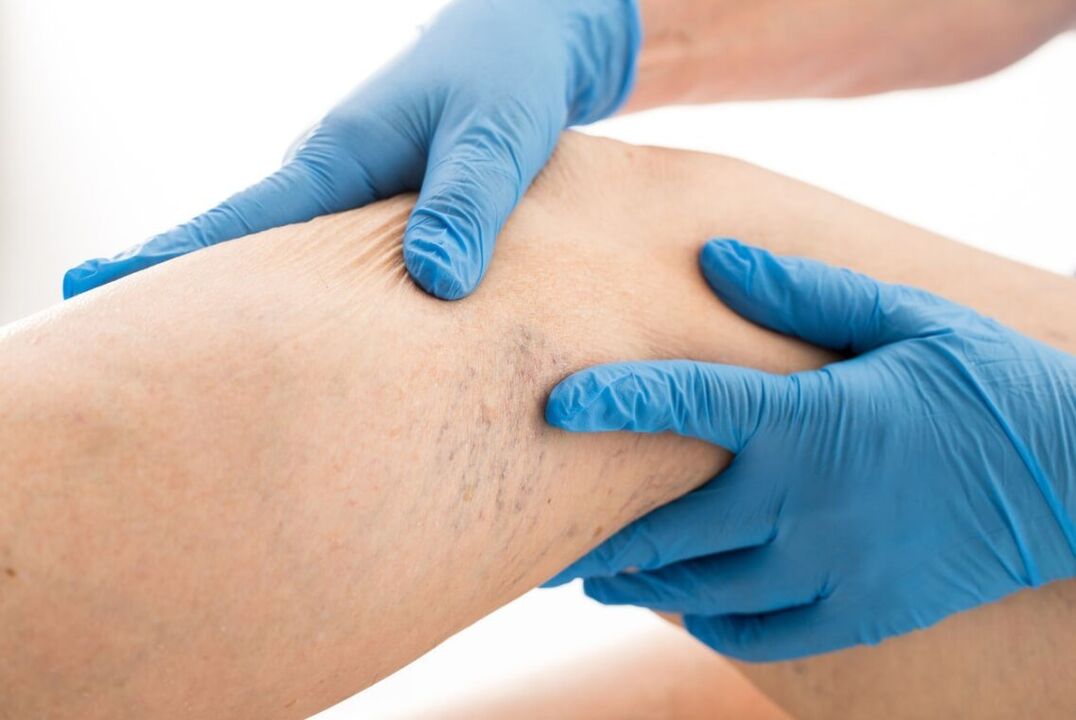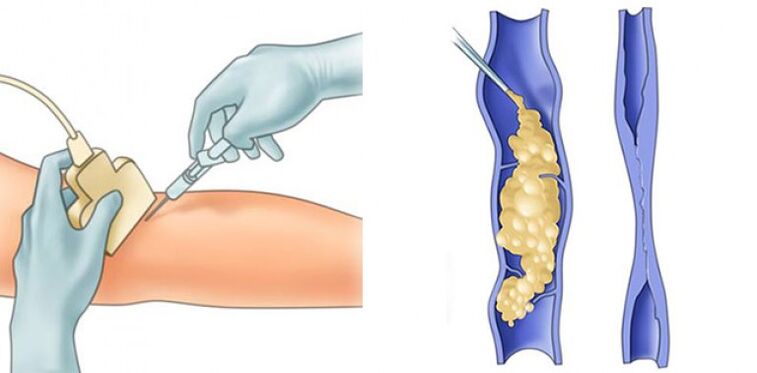Risk factors for the development of varicose veins
- Heredity.
- Pregnancy is traditionally considered to be one of the main risk factors for the development of varicose veins, more frequent (3-4 times) damage to women.
- Obesity is a proven risk factor for varicose veins.At the same time, an increase in body weight index to 27 kg/m2 and more leads to an increase in the incidence of the disease by 33%.
- Lifestyle has a significant impact on the development and course of varicose veins.More special, the adverse effect of prolonged static loads with weight lifting or a fixed stay in the upright position and sitting is proven
- In the course of varicose veins, near linen, various corsets that increase inside abdominal pressure, have adverse effects.
- The high incidence of varicose veins in industrialized countries is to some extent due to nutritional characteristics.The high degree of food processing and the reduction of the diet of raw vegetables and fruits lead to the constant deficiency of plant fibers needed to repair the venous wall and chronic constipation, which cause a constant increase in intra -abdominal pressure.
- Dishmonic conditions are involved in the pathogenesis of varicose veins.Their role has gradually increased in recent years, which is due to the widespread use of hormonal contraception, the promotion of hormonal replacement therapy during menopause and in the treatment of osteoporosis.Estrogens and progesterone, as well as their derivatives, have been shown to reduce the tone of the venous wall due to the gradual destruction of collagen and elastic fibers.

Clinical picture of varicose veins
Different veins-This is a disease that is not indifferent to beautiful sex.The varicose veins of the female veins are patients with an average of three times more than men.
Signs of varicose veins- tangled extensions of subcutaneous veins, pain, weight in the legs, swelling of the foot and lower leg, fatigue at the legs until the end of the day.Different nodes are often predisposed to the formation of blood clots and infection.Fleette may develop - inflammation of the blood vessels orthrombophlebitis- inflammation of the vessels complicated by blood clots.There are solid, very painful cords in the course of the veins.The skin changes, loses its elasticity and the color-it becomes thick, dark brown.With easy injuries, ulcers occur.A young woman can become a person with disabilities at the age of 40.
One of the serious complications of varicose veins is thrombophlebitis - a process in which a thrombus with subsequent inflammation is formed on the inner wall of the vein.This pathology is dangerous as blood clot can come out with the flow of blood to enter the pulmonary artery (wire - the pulmonary artery thromboembolia) and lead to the death of a person.Therefore, varicose veins are a dangerous disease that should be treated.
Symptoms of varicose veins (these are symptoms should make you be cautious):
1. Pain.
The causes of pain in varicose veins are many, numerous.A variety of pain in varicose veins is also very rich:
- Hot throbbing pain,
- Night cramps and itching in the muscles,
- Walking pain
- Pain on venous trunks,
- General pain and limm in the legs
2. Swelling in the legs.
3. Feeling of bursting and weight in the legs.
4. Changes in the skin.In the beginning, the skin becomes dry, pigmentation occurs - the skin of the feet darkens, covered with brown "spots".Later, various dermatitis, eczema and so -called trophic disorders in the form of mild healing wounds to the formation of ulcers can join these symptoms.
5. Related, lengthened varicose veins protruding above the surface of the skin of the legs and feet, with cylindrical or mixed extensions.
6. Vascular stars (Telangioectasia).Yes, people with varicose veins are also included in the group of patients with small veins enlargement, as the causes of their appearance are the same.
The most early stages of the development of varicose veins are very difficult to detect and diagnose, since in the very early stages of the disease there is no main characteristic - varicose veins.Both the first and most symptoms of varicose veins, such as the feeling of the severity of the legs, moderate pain in the legs, increased fatigue, are also found with the initial stages of arterial diseases, flat legs, lumbar osteochondrosis.In such difficult cases, it is impossible to make the right diagnosis - you will need a consultation of a doctor or even several specialists - a phlebologist, a neurologist, a surgeon and a manual therapist.Highly precise instrumental diagnostic methods such as ultrasound will also be required.
In phlebology, such symptoms are associated with the onset of pathological blood flow through deep veins.
Most often, women notice the first signs of varicose veins in the spring, when you can change the wardrobe, but it is not known where the venous "patterns" on the legs, legs and hips came from.The leg is deformed, it becomes blue and ugly.
The first symptoms of varicose veins of the legs, on which you can suspect the appearance of varicose veins is an increase in the pattern of veins on the skin of the feet.This defect, as already noted, is most often noted by young women: on the legs or thighs they notice gums who have not been there before.
And often similar symptoms of initial varicose disease precede the onset of pain and other unpleasant sensations.Often the first "finds" of the veins are accompanied by absolutely no unpleasant sensations.
Women are worried about this vascular network only as a cosmetic defect.Such patients are often if they turn to specialists, then just to eliminate cosmetic discomfort.
If you have thin and pale skin, then the first symptoms of initial varicose veins are particularly visible.These are thin veins that do not even protrude above the surface of the skin.The first symptoms of varicose veins can also look like a network of thin bluish vessels under the skin.
There may be other complaints at the beginning of varicose veins.
The appearance of development and progression of varicose veins is already manifested by enlarged nodes protruding above the surface of the skin - one or more.This is the main symptom of initial varicose disease.
Different nodes can most often be found on the inner surface of the legs or thighs.With long walking or prolonged standing, such a symptom of varicose veins such as fatigue, weight in the legs, there is a feeling of cracking (often in calves).These symptoms are especially clear with a prolonged stay in a sitting or upright position.There is also pain or acute pain in places with varicose veins (varicose veins), convulsions in the calf muscles, especially in the evening, and sometimes at night.The first signs of dysfunction in the veins are also manifested by swelling of the legs for the rest of the day.Edema is usually found in the evening, especially after prolonged standing.After a night break, the swelling completely disappears.
These symptoms of varicose enlargement are initially quickly passed if you relax, especially if you lie down.However, the disappearance or significant reduction of these symptoms when walking and after a night break are very characteristic of the symptoms of varicose disease.
But varicose veins, if they are not seriously engaged, does not withdraw, progress.Over time, such symptoms of varicose veins appear as convincing dark blue intradermal veins protruding above the surface of the skin of the legs and legs and similar to the clumps of very ripe red grapes.All this is accompanied by bursting pain in the legs and calves, a feeling of warmth in the legs, night convulsions in the calf muscles, swelling.Gradually, changes in the skin join these symptoms.At first the skin becomes dry, darkens, a pigment appears on it - brown spots.A little later, the so-called trophic disorders began to join: poor healing explosions and even ulcers.
The pain is beginning to worry more and more often, especially in the afternoon or in the evening.

Varicose veins
There are many approaches to treating varicose veins, but today the most effective method in treatment is surgical surgery -VenectomySMedicine and compression therapy is used as an auxiliary methods for surgical treatment and as independent methods in the initial stages of varicose veins and the presence of contraindications for surgical treatment.
Treatment of varicose veins should be complex and individual, most often involves a combination of conservative and surgical treatment.
Types of surgical treatment of varicose veins:
- Classic phlebectomy
- Laser coagulation
- Combination
For the treatment of varicose veins, modern medicine uses laser surgery (EVLC).This method includes intravascular laser coagulation.EVLC- The intravascular laser is an advanced method of treating varicose veins.Laser exposure is a procedure that occupies an intermediate position between non -surgery and surgical methods for treating the disease.
DignityEVLC-This is a radical but low -traumatic treatment.After such procedures, the patient may leave the clinic in a few hours, in good physical condition.Similar treatment is performed under working conditions and local anesthesia is used.
The most modern laser devices are currently being used.At the same time, the patient's problem areas are exposed to a laser with the optimum wavelength (1470 nm).The radial light used ensures reliable closure of the vein.In this case, there are no side effects and the surrounding tissues do not heat up.Therefore, after such an operation, the number of bruises is reduced and the postoperative period passes easily and painlessly.
The operation is not accompanied by redundancies, it does not leave pigmentation and scars.After 3 weeks after surgery, the patient's legs take on a normal appearance without enlarged nodes.Such treatment of varicose veins has become widely made in the western countries.For large varicose veins, EVLC is used in combination with microflectomy.This allows you to get a good aesthetic result.

Advantages of using EVLC:
- Recovery
- Slight trauma
- Cosmetic effect
- Lack of skin scars from distant varicose veins
- Treatment is performed under local anesthesia (Turkland anesthesia)
- Lack of pain syndrome
- High therapeutic effect
Possible complications
Treatment with laser technique has virtually no complications.Rare complications include burns, the likelihood of venous thrombophlebitis and paresthesia in the working area.However, experienced phlebologists guarantee a quality result.
Such operations do not disturb the patient's lifestyle.After the intervention, it is necessary to wear compression socks to provide slight pressure on the veins.Special products are applied to the area of particularly large enlarged knots - cotton rollers or latex pads.After the laser procedure, the patient is recommended to walk daily.
Treatment of varicose veins with laser guarantees the preservation of the ability to work and physical activity.























